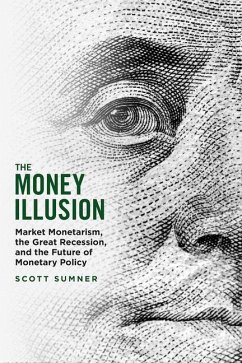
The Incomplete Currency
The Future of the Euro and Solutions for the Eurozone
Versandkostenfrei!
Versandfertig in über 4 Wochen
61,99 €
inkl. MwSt.
Weitere Ausgaben:

PAYBACK Punkte
31 °P sammeln!
A fact-based treatise on the Eurozone crisis, with analysis of possible solutions The Incomplete Currency is the only technical -- yet accessible -- analysis of the current Eurozone crisis from a global perspective. The discussion begins by explaining how the Euro's architecture, the relationship between finance and the real economy, and the functioning of the Eurosystem in general are all at the root of the current crisis, and then explores possible solutions rooted in fact, not theory. All topics are analysed and illustrated, making extensive use of examples, tables, and graphics, and the id...
A fact-based treatise on the Eurozone crisis, with analysis of possible solutions The Incomplete Currency is the only technical -- yet accessible -- analysis of the current Eurozone crisis from a global perspective. The discussion begins by explaining how the Euro's architecture, the relationship between finance and the real economy, and the functioning of the Eurosystem in general are all at the root of the current crisis, and then explores possible solutions rooted in fact, not theory. All topics are analysed and illustrated, making extensive use of examples, tables, and graphics, and the ideas presented are supported by data sets and their statistical elaborations throughout the book. An extensive digital component includes numerical simulations of public debt dynamics for different Eurozone countries, evaluations of the sustainability of programmes like the Fiscal Compact, and stress tests on the ability of institutions like the ESM to cope with major liquidity crises, and the spreadsheets used to calculate data in the book is provided for readers to access for themselves. The survival of the European monetary union has been questioned due to the accumulation of structural imbalances and the negative effects of the global financial crisis. This book lays out the full extent of the problem, explains what caused it, and provides possible solutions backed by extensive data. * Dig down to the root of the Eurozone crisis * Learn why austerity doesn't fix anything * Understand how the Euro has changed economies * Consider possible strategies for recovery In a macroeconomic context where the monetary policy is the prerogative of the European Central Bank and fiscal policy, hopeless austerity works against the economic recovery of the Eurozone countries. A positive attitude is difficult, but necessary. The Incomplete Currency is an insightful, important resource that guides readers toward real solutions.













